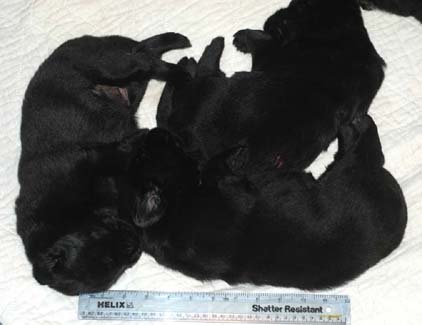
Chapter Four
Two Weeks Old
Every parent remembers when the baby took its first step. Every breeder watches eagerly for when his puppies get up off those round bellies and start to effortlessly cruise. For most Sweetbay pups, that’s right about now, at two weeks old.

By week two, the pups are exponentially bigger. Most are two-and-a-half to three pounds. When you pick one up, he feels like he’s twice as big, too. He’s also much fluffier than he was at birth. His tongue is now smooth around the edges, the serrations having magically disappeared. Rub your fingers along his gums and you’ll feel teeth nubbins breaking through. Those puppy canines come in fast. One day the pups look like old men who’ve lost their dentures, and the next, they’ve got needle-sharp fangs that any vampire would covet.
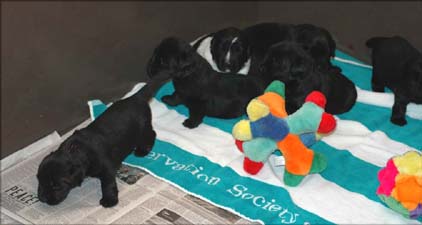
The biggest change this week is one of mobility. The pups’ walking skills improve day by day. During this week, the pups will go from lurching about to cruising much more smoothly. They get up off their bellies and move! The more adventurous pups will really hustle, zipping from one end of the whelping box to the other. The toweled area is reduced from the entirety of the whelping box to just one end. The pups become proficient at walking on the slippery newspapers, and they head to the papered end to eliminate.
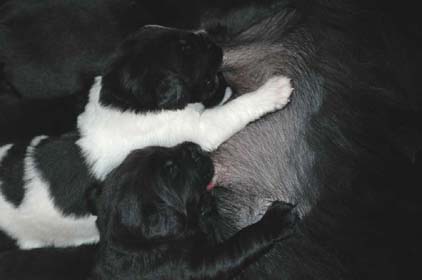
Nursing is efficient and productive. The mom produces more milk, and the puppies are masters at extracting it.
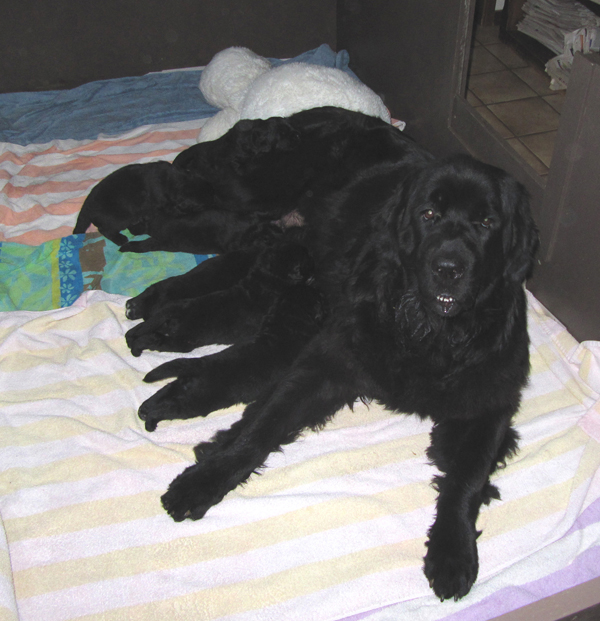
A good mother knows the pups need her nourishment to survive. She has her own internal clock, and feeds them on schedule, without human prompting. Day by day, the intervals between feedings become a little longer. What was every two hours at first becomes once every three hours, or four.
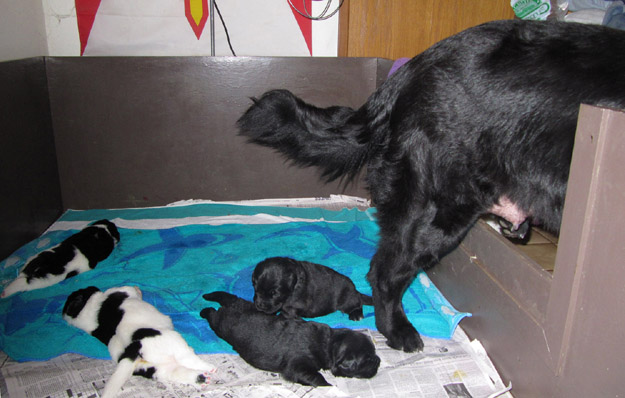
When the pups were younger, the mom would remain in the whelping box after they nursed. She paid them considerable attention, cleaning them up, nuzzling them, encouraging them to stay near. She would take long leisurely naps in the box, keeping them company. Now that the pups are two weeks old, she spends relatively little time in the whelping box, other than to feed them. And when they are done … so is she.
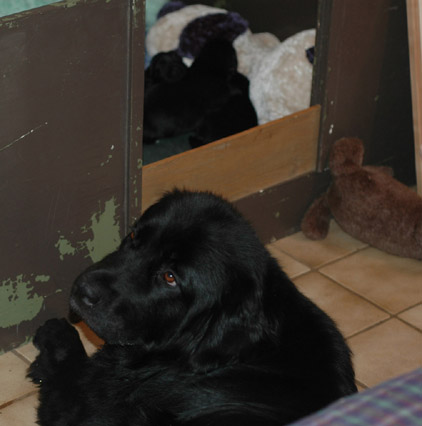
That doesn’t mean she’s abandoned them. She maintains a post right outside the box, perfect for keeping an eye on them and monitoring what’s going on in the rest of the house.
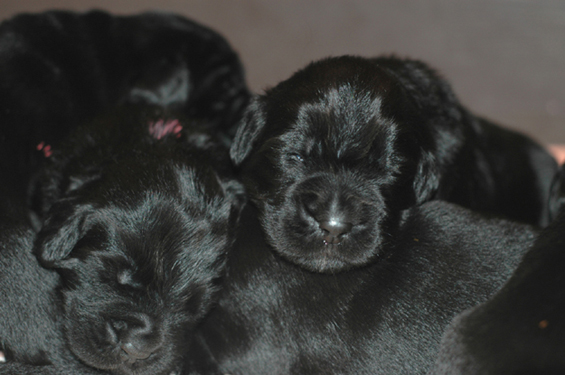
Midway during week two, the pups’ eyes open. The process is very subtle. At first, you see the merest shiny glint in the corner of an eye.
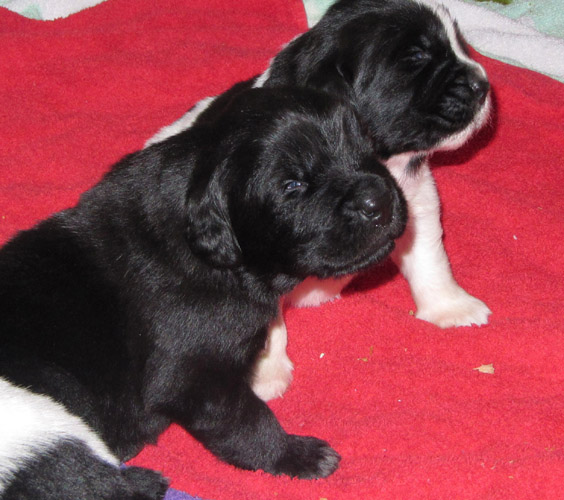
Then the eyelid opens a little more. If you look closely, you can spot a sliver of bright blue eye. Yes, blue. Newfie eyes stay blue for several weeks. They gradually turn grey, and eventually morph into the brown color (light or dark) that will remain throughout the dog’s life.
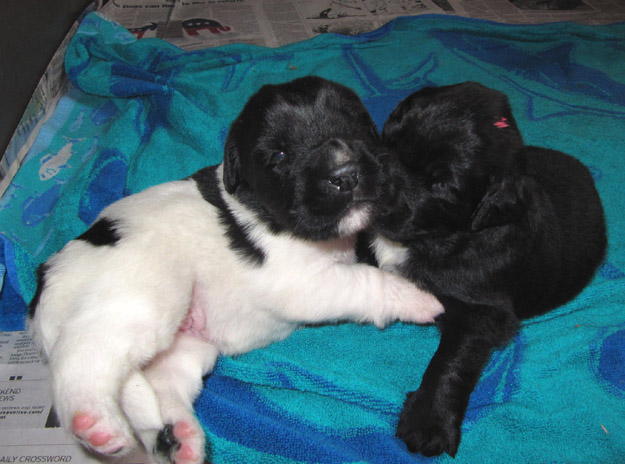
When the eyes first open fully, it’s obvious that the pups can’t focus all that well. They may glance in your general direction, but they aren’t seeing you clearly.

But it only takes a few days for those bright eyes to gain their full function. Now, when a puppy turns in your direction, he looks right at you.
The puppies’ hearing becomes similarly acute. Before, Ellis and Judi could walk in and out of the whelping room and the pups did not respond. Now, the moment they enter, sleeping puppies come instantly awake. They know the arrival of people is always good: happy voices, lots of cuddling, lots of attention.
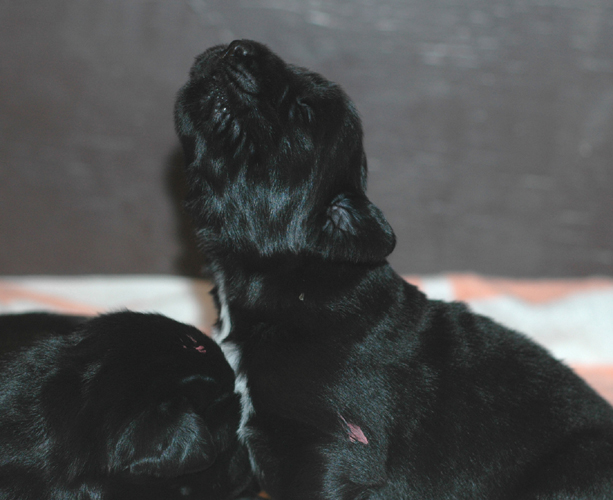
The puppies’ noses, however, are acute from the get-go. They smell their mother the second she enters the room. If you think kids get excited when they hear the ice cream truck, you should see two-week-old puppies scenting the arrival of their mother.
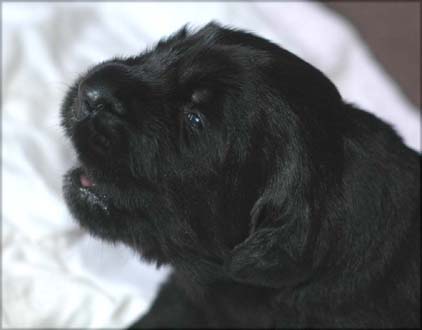
Contented newborns are very quiet. But by two weeks, the puppies have a lot to say. Little yips, yelps, barks and trills punctuate their waking moments.
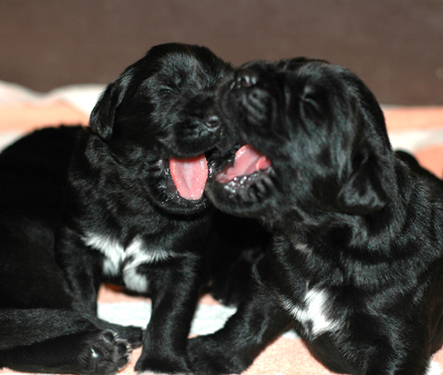
Sometimes, they look (and sound) like they’re laughing at some private puppy joke.
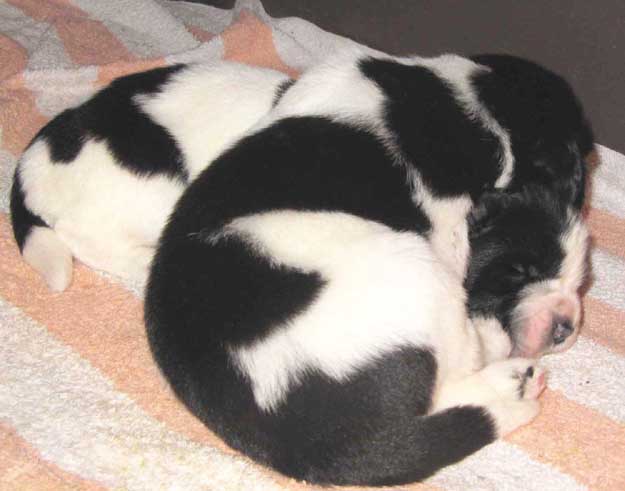
The puppies still spend a large portion of each day sleeping. They continue to interlock, Lincoln log style. Quite frequently the same two will pair up repeatedly, taking turns being the “under” or the “over” dog.
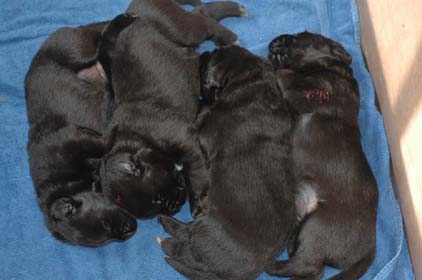
Sometimes they arrange themselves in neat, tight rows.
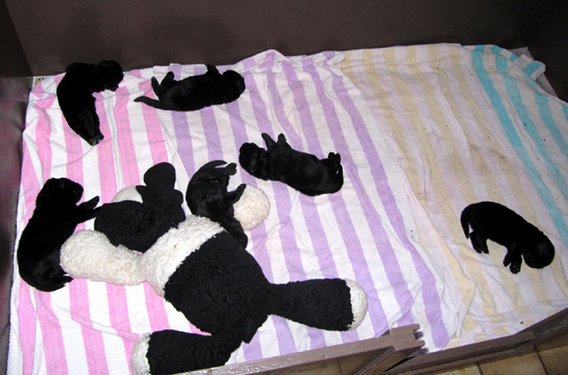
And sometimes it’s as though a mighty hand has gathered them up, shaken them, and then flung them about, to land like wayward dice on a craps table.
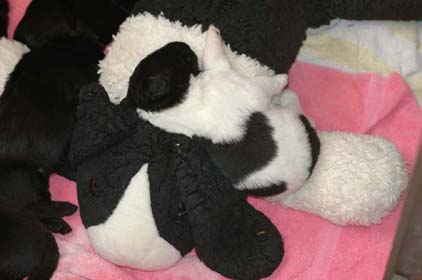
The big stuffed animal the Adlers contribute never loses its appeal. Sometimes, it’s hard to tell where the stuffie leaves off and the Newfie begins. Can you spot the Landseer pup on the black-and-white bunny? Not so easy, is it.
Over and over, Ellis or Judi count the puppies and find they are one short. It’s usually a Landseer, perfectly camouflaged by the parti-colored bunny or cow.
Sometimes, a puppy crawls under the stuffie to take a nap. When he wakes up and begins to move about, you can’t see him under the stuffie. So it looks like the stuffed animal has come alive!
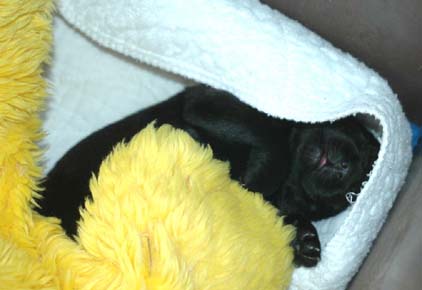
Puppies are endlessly adorable. This pup has found the perfect cozy bed. He wriggled into the corner of the rolled-edged blanket, flipped onto his back, and fell fast asleep.
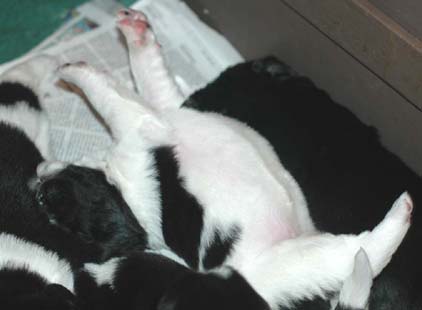
Invariably, there’s always one pup in each litter who sleeps on its back. One of the reasons Ellis and Judi mark each puppy individually (with that nail polish splash) and carefully maintain those markings is to note the traits each puppy exhibits. Some are just interesting, temporary curiosities. Some traits remain throughout a dog’s life.
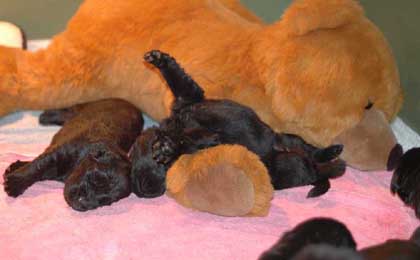
What looks uncomfortable to the human eye may be the height of luxuriousness to a two-week-old puppy. What human would arch his back over a hump like this bear leg, and then fall deeply and contentedly asleep?
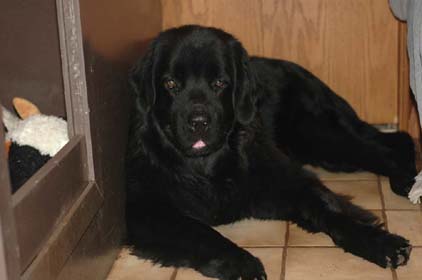
People often ask Judi, “How do you know the pups are doing okay?” The quick answer is, “You look at the mom. She’ll tell you.” When there’s something wrong, the mom is fretful, pacing, unhappy. She may even point out the puppy that’s having the problem. (Could be gas, because he swallowed too much milk too quickly. Could be he needs to poop. Could be he’s too hot. Could be he’s just grumpy and wants to be held and cuddled for a bit.) But when all is right with the pups, all is right with the mom.